ARY News – Pakistan’s largest and the most sought-after media channel – brings to you an amazing option to watch LIVE...whatever is happening in the world right now. You just need a right device and an access to Internet for visiting live.arynews.tv on the go from anywhere. So, keep going LIVE with ARY News.
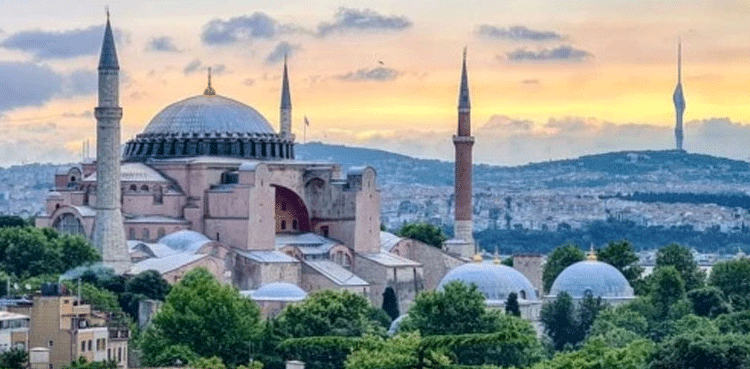
ISTANBUL: The second round of talks between Pakistan and the Afghan Taliban has been completed in the Turkish city of Istanbul, ARY News reported, citing sources.The sources said that Pakistan has categorically rejected Afghanistan's offer of transferring Tehreek-e-Taliban Pakistan (TTP) to a new location.Pakistan urged Afghanistan to implement its promise of decisive action against the TTP, the sources added.The diplomatic sources said that the negotiations between the two neighbouring countries continued for a straight nine hours in Istanbul.According to official sources, discussions were focused on establishing a joint monitoring and oversight mechanism to curb cross-border terrorist movements and addressing trade barriers.Officials confirmed that the talks also explored the possibility of reaching a long-term political understanding between the two sides.Earlier, the Qatari Ministry of Foreign Affairs has announced that Pakistan and Afghanistan have agreed to a ceasefire, following 13 hours of negotiations held in Doha.According to the Qatari Foreign Ministry’s statement, both sides also agreed to establish a permanent mechanism for mutual peace and stability.A follow-up meeting will be held in the coming days to ensure the implementation and sustainability of the ceasefire.The statement asserted that these measures will contribute to strengthening peace, security, and stability between the two brotherly Islamic nations, and help lay the foundation for ending border tensions and promoting lasting regional peace.Defense Minister Khawaja Asif confirmed the development on X (formerly Twitter), stating that the ceasefire agreement marks an end to terrorist activity from Afghan soil into Pakistan.He added that both neighboring countries have agreed to respect each other’s territorial sovereignty, and revealed that delegations will meet again in Istanbul on October 25 for follow-up discussions.Khawaja Asif also expressed gratitude to Qatar and Türkiye for facilitating the peace process.The first round of talks took place yesterday in Doha, hosted by Qatari Intelligence Chief Abdullah bin Mohammed Al Khalifa.The Pakistani delegation was led by Defence Minister Khawaja Asif, assisted by senior security officials, while the Afghan delegation was headed by Defence Minister Mullah Mohammad Yaqoob.

ISLAMABAD: The Pakistan Telecommunication Authority (PTA) has warned citizens to be cautious while providing their thumb impressions or fingerprints to anyone, ARY News reported.Fraudsters and imposters typically target simple people and women, luring them with promises of free SIM cards or financial/aid schemes to obtain their fingerprints.The SIM cards obtained through this deceit are often used in serious crimes.The PTA issued the warning to citizens as part of its awareness campaign, calling it a "protective step in the digital age."Moreover, the PTA stated that giving your SIM card to someone else is a crime, and advised citizens to avoid doing so. Earlier, Meta, in collaboration with the Pakistan Telecommunication Authority (PTA) and the educational platform EYEYAH!, has launched a social campaign and interactive online experience called “Is This Legit?” to raise awareness about common scams in Pakistan.This initiative is part of a broader APAC-wide campaign that spans over 15 countries, aiming to promote safer digital experiences. The campaign educates users about seven prevalent types of scams: romance, shopping, impersonation, investment, job, account hacking, and messaging scams. It features engaging, gamified content designed to help users identify scam indicators and red flags. Chairman PTA, Major General (R) Hafeez Ur Rehman, commended the collaboration, emphasizing PTA’s ongoing commitment to fostering a secure and informed digital environment.He highlighted the initiative as a continuation of PTA and Meta’s joint efforts to enhance digital literacy and protect users from fraudulent activities.Dania Mukhtar, Head of Pakistan Public Policy at Meta, said, “At Meta, we are deeply committed to safeguarding our community in Pakistan by proactively removing scammers from our platforms. However, scammers are always changing their tactics, targeting many apps and platforms all at once, to make it hard for them to get caught”.“We recognize that awareness and education are powerful tools for online users. Through this campaign, we aim to help people in Pakistan identify common red flags in an interactive and engaging way, empowering them to stay safe from scams”, she said.She appreciated the Pakistan Telecommunication Authority (PTA) for helping Meta amplify this initiative and empower the community with the knowledge and resources needed to protect themselves online.PTA and Meta continue to play a leading role in promoting digital literacy, protecting users from online threats, and ensuring a secure and trustworthy digital ecosystem for all.To experience the game yourself, visit https://pk.isthislegit.eyeyah.com/
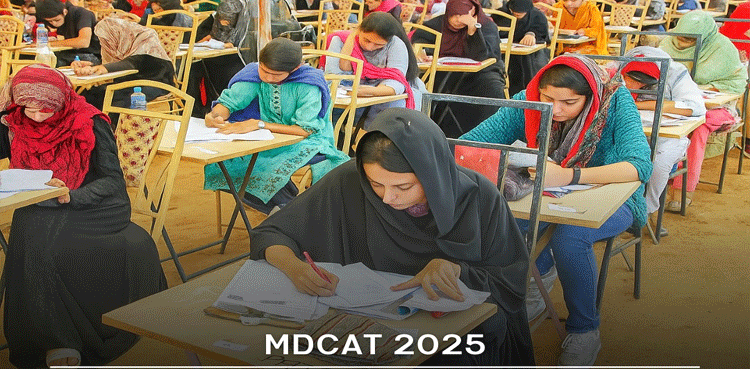
KARACHI: The Sukkur Institute of Business Administration (IBA) has completed all preparations for holding the Medical and Dental Colleges Admission Test (MDCAT) 2025 today, and its testing service has also issued guidelines for the students, ARY News reported.The NED University and the Dow Ojha Campus have been designated as examination centers in Karachi. Arrangements for the biometric system, metal detectors, and comprehensive security have been completed.Overall, more than 33,174 candidates are expected to participate in the examination centers set up across Sindh and Islamabad.Timings to reach Examination Centers Students are instructed to reach the examination centers before 6:30 am in morning . Entrance to the centers will be closed after 8:00 am.The MDCAT 2025 examination will begin between 9:00 am and 10:00 am in the morning.Must Carry These Thing Before Leaving Homes Students are directed to bring their original identity cards or passports. Students under 18 years of age should bring their juvenile card or NICOP (National Identity Card for Overseas Pakistanis) .A complete ban is imposed on bringing mobile phones, smartwatches, and electronic devices into the examination centers.The Sukkur IBA Testing Service will provide all stationery and test material. Separate waiting areas have been set up for parents, where water and fan facilities will be provided.Police, traffic police, and emergency services will be deputed alongside the testing staff at the examination centers.The MDCAT 2025 TestThe MDCAT 2025 test will be three hours long and will be comprised of 180 questions.The test will include 81 questions on Biology, 45 on Chemistry, 36 on Physics, and 9 questions each for English and Logical Reasoning.Four versions of the paper, categorized as (A, B, C, D), have been prepared.The students can take their question papers home after the examination, and negative marking will not be conducted.Overseeing The Pakistan Medical Dental Council (PMDC) , the Sindh Higher Education Commission, and representatives of the High Court will oversee the test.Transparency, merit, and integrity will be ensured during the test, the Sukkur IBA Testing Service (STS) said.Complete coordination will also be ensured between the health department, district administration, and emergency services.On the other hand, students will only be allowed to sit the exam in their respective provinces and will not allow to take the exam in another province. Under the MDCAT decision, various universities across the country have been assigned the responsibility of conducting the exam, including IBA Sukkur, Bolan University of Medical and Health Sciences Quetta, and Shaheed Zulfiqar Ali Bhutto Medical University Islamabad. A test center will also be set up in Islamabad for candidates from Sindh and Balochistan, so that they could be facilitated.Students from Punjab and Khyber Pakhtunkhwa (KP) will give the exam in their respective provinces, while candidates from Azad Jammu and Kashmir, Gilgit-Baltistan, and all four provinces will have the opportunity to take the exam at Shaheed Zulfiqar Ali Bhutto Medical University Islamabad. However, seats for these candidates will be allocated according to their respective quotas.The PMDC has stated that for admission to medical and dental colleges, it is mandatory for candidates to hold the domicile of the relevant province.Special seats have also been allocated for students from Azad Jammu and Kashmir and Gilgit-Baltistan in medical and dental colleges.New Schedule for MDCAT 2025: Due to the recent rains and flood situation, the PMDC has revised the Schedule for MDCAT. The exam, which was previously scheduled for 5th October 2025, are going to be held on 26th October (Sunday).According to the council, the new date was decided after consultations with universities of the provinces, Azad Jammu and Kashmir, and Gilgit-Baltistan.Federal Minister Mustafa Kamal stated that this decision is in the best interest of the students, and the government is committed to provide equal educational opportunities to students across the country.

RAWALPINDI: Security forces foiled a major terror plot after killing three khawarij terrorists in an Intelligence-Based Operation (IBO) in the Jhalar area of North Waziristan, the Inter-Services Public Relations (ISPR) said, ARY News reported.The operation was launched after security forces found the presence of a vehicle prepared for a suicide attack by the Indian proxy khawarijs on a tip off.According to the ISPR, an exchange of heavy fire took place between the security forces and the terrorists, resulting in the killing of three khawarijs .Security forces also successfully destroyed the suicide vehicle.The ISPR stated that a clearance operation is ongoing to eliminate any possible remaining terrorists. The security forces reiterated their resolve that efforts will continue until the eradication of foreign-sponsored terrorism.The security forces vowed that the elimination of terrorism will be ensured at all costs, the ISPR added.Earlier two days ago, security forces conducted an intelligence-based operation (IBO) in the Tank district following reports of the presence of Indian sponsored Fitna al Khawarij terrorists, the Inter-Services Public Relations (ISPR) said.According to the military media wing, on 24 October 2025, on reported presence of Khawarij belonging to Indian Proxy, Fitna al Khawarij, Security Forces conducted an intelligence-based operation in Tank District.During the conduct of operation, own troops effectively engaged khawarij locations, and after an intense fire exchange, eight Indian sponsored khawarij were killed.Weapons and ammunition were also recovered from the killed khawarij, who remained actively involved in numerous terrorist activities against the Security Forces and Law Enforcement Agencies as well as killing of innocent civilians.Sanitization operation is being conducted to eliminate any other Indian sponsored Kharji found in the area as relentless Counter Terrorism campaign under vision “Azm e Istehkam” (as approved by Federal Apex Committee on National Action Plan) by Security Forces and Law Enforcement Agencies of Pakistan will continue at full pace to wipe out the menace of foreign sponsored and supported terrorism from the country.On September 14, 2025, security sources reported growing internal divisions within Fitna-al-Khawarij, following heavy setbacks in recent months. Several major formations of the group were eliminated during border crossings in the past three months, leaving the leadership unsettled and increasingly fractured.According to security sources, Fitna-al-Khawarij commander Noor Wali has instructed foot soldiers to refrain from using mobile phones to avoid detection. The leadership has also directed militants to hide among civilians and use the local population as shields during operations.Reports further reveal that mosques and guest houses have been exploited for making improvised explosive devices (IEDs) and for sheltering fighters. Social media manipulation, an old propaganda tool of Fitna-al-Khawarij, has also been renewed under fresh directives.Security sources added that the group’s leadership has ordered the involvement of illegal Afghan nationals in attacks across Pakistan. Recent incidents in Dir and South Waziristan included a significant number of fighters crossing over from Afghanistan.Pakistan’s security forces remain fully prepared and committed to eliminating Fitna-al-Khawarij and their facilitators from the country, sources affirmed.
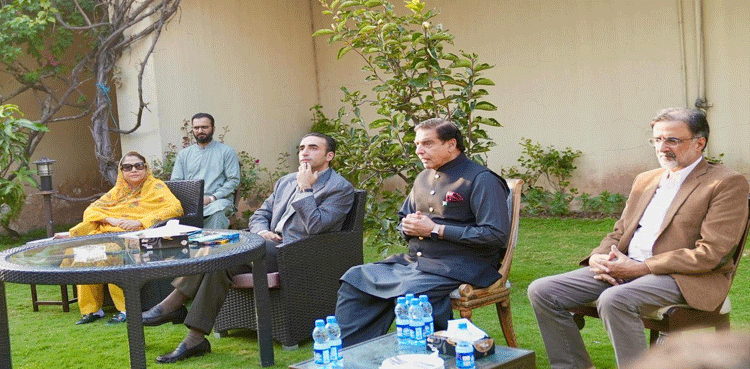
ISLAMABAD: The Pakistan People's Party (PPP) central leadership has approved to initiate an in-house change in the Azad Kashmir Legislative Assembly while a no-confidence motion will be presented in the assembly during coming 72-hours, ARY News reported, citing sources.Sources indicated that the AJK Parliamentary Party called on President Asif Zardari at the President's House today, Saturday.The Parliamentary Party briefed the President regarding the in-house change in the AJK Legislative Assembly, the sources said.The sources apprised that the parliamentary party has convinced the PPP Chairperson Bilawal Bhutto Zardari of the in-house change in the AJK.Bilawal Bhutto Zardari, Faryal Talpur, Qamar Zaman Kaira, and Raja Pervez Ashraf also participated in the meeting.The members of the PPP AJK parliamentary party also presented suggestions to the President.The sources stated that President Asif Zardari will give final approval for the in-house change in the AJK Legislative Assembly.The PPP has decided to bring a no-confidence motion against AJK Prime Minister Chaudhry Anwar-ul-Haq within 72 hours , the sources added.The PPP leadership also discussed the grievances of the people and their resolution, the sources said. While the PPP leadership also considered improving the organizational infrastructure, while the PPP AJK leadership gave suggestions on the political situation.Moreover, the PPP leadership is considering three names for the PM post, which included Sardar Yaqoob, Chaudhry Yaseen and Chaudhry Latif Akbar while the PPP leadership will give final approval for the name, the sources said.
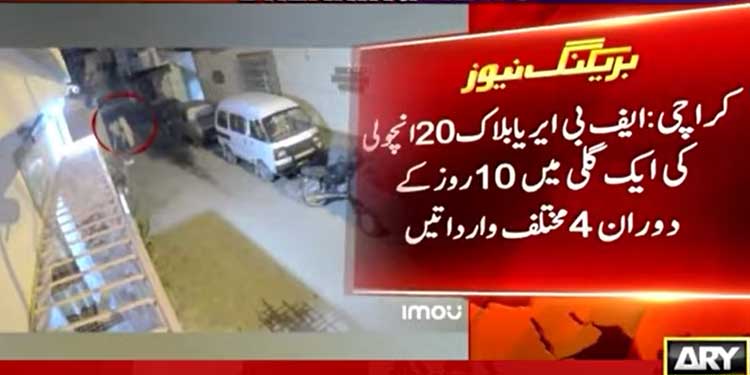
KARACHI: A wave of brazen street crime has swept through a single residential street in the Federal B Area, Block 20, Ancholy, leaving residents fearful and questioning the city's security situation. In a stark demonstration of the escalating audacity of criminals in Karachi, four separate snatching incidents—including the theft of a parked vehicle—occurred on the same street within a ten-day period.https://youtu.be/HIsQnfWxeYIThe targeted street, typically considered a quiet residential zone, has become the focus of a police investigation after the CCTV footage of all four incidents came to light. The sequence of events paints a worrying picture of organized and routine criminal activity. Audacity and Resistance Caught on Camera The footage, which has been handed over to law enforcement, confirms the details of the robberies. In the first three incidents, robbers on a motorcycle successfully deprived citizens of mobile phones and cash in quick, forceful grabs.Most notably, the CCTV captured a moment of civilian defiance during one of the snatchings. A victim, after being robbed, resisted and was seen running after the fleeing robbers, an act that underscores the desperation and frustration felt by citizens in the face of continuous street crime. Escalation to Vehicle Theft The fourth incident marked a significant escalation. On the same street, thieves targeted and stole a motorcycle parked outside a house. This shift from opportunistic snatching of personal items to the pre-meditated theft of a vehicle suggests a more organized operation, potentially one seeking a new vehicle for future crimes.Local authorities have acknowledged the severity of the focused crime spree. "The concentrated number of incidents on this one street is highly unusual," a police spokesperson stated. "We have received and are analyzing the CCTV footage from all four incidents. The hunt for the criminals has started, and we are using this visual evidence to identify the culprits and their operational pattern." The incidents in Ancholy highlight the growing sense of vulnerability among Karachi's citizens, a sentiment echoed by statistics which show street crimes, particularly mobile and vehicle snatching, remain a persistent challenge for the city's law enforcement. Police efforts are now focused on dismantling the network behind this targeted wave of crime and restoring a sense of security to the residents of Ancholy.

ISLAMABAD: The District and Session Court of Islamabad on Saturday, today, pronounced reserved verdict on the petitions regarding supplementary challan as the court rejected objections of human rights lawyers and social activists Iman Mazari and his husband Hadi Ali Chatha while hearing the controversial tweet case. Additional District and Sessions Judge Muhammad Afzal Majoka heard the controversial tweet case against lawyers and social activists husband and wife duo, Iman Mazari and Hadi Ali Chatha.Advocate Qaiser Imam appeared on behalf of Imaan Mazari and Hadi Ali Chatha. While giving arguments against the supplementary challan, Qaiser Imam read out the rules of the investigation and said when the final challan had been submitted, there was no need for a supplementary challan.On the other hand the court also rejected the petitions filed by the prosecution and various others regarding voice matching .While Iman Mazari and Chatha would be indicted on October 29. Later, the hearing of the case adjourned till October 29.The case was registered by the National Cyber Crime Investigation Agency (NCCIA) against Imaan Mazari and Hadi Ali Chatha in connection with a social media post considered controversial by the authorities.https://youtu.be/G78cw1lzPa8?si=y8pt30ApttSXeI26Earlier, on October 20, the District & Sessions Court of Islamabad granted more time to the defence for preparing an appeal against the charges framed in the controversial tweet case involving lawyer and activist Imaan Mazari and Hadi Ali Chatha. During the hearing, Advocate Qaiser Imam appeared on behalf of Imaan Mazari. He informed the court that the defence intended to file an appeal against the charges framed earlier and requested time to prepare it. Accepting the plea, the court allowed additional time for preparation and adjourned further proceedings till October 24. The court had also issued non-bailable arrest warrants for Imaan Mazari and Hadi Ali Chattha, in a case related to controversial tweets against the state and national security institutions. Additional District and Sessions Judge Muhammad Afzal Majoka heard the case but the couple did not show up. The judge ordered to arrest and produce the couple before the court on September 24.Earlier, the court had issued summons to both Mazari and Chattha.Their counsel had filed a plea seeking cancellation of the warrants, but the court rejected the request. The hearing was adjourned till September 24.According to the FIR lodged by the NCCIA, the couple is allegedly attempting to incite ethnic divisions and glorify terrorism through their social media posts. The FIR further alleged that they held security forces responsible for the issue of missing persons in Khyber Pakhtunkhwa and Balochistan.The case against the couple has been registered under Sections 9, 10, 11 and 26 of the Prevention of Electronic Crimes Act (PECA).

In Pakistan, millions of digital bank account and e-wallet users could face service interruptions from 25 October, as the State Bank of Pakistan’s (SBP) new biometric verification regulations come into effect.The new rules, introduced through BPRD Circular No. 1 of 2025 on July 25, require all SBP-regulated entities, including banks, development finance institutions (DFIs), microfinance banks (MFBs), digital banks, and electronic money institutions (EMIs), to update their account opening and customer onboarding processes.Under the revised framework, biometric verification will be mandatory as the primary method of identity for all individual and entity accounts, in both local and foreign currencies, including Roshan Digital Accounts.Earlier, financial institutions were permitted a 60-day grace period to complete biometric verification, after which accounts would be blocked from debits.Industry sources cautioned that the policy shift could temporarily lock out a large number of users who have yet to complete the process, disrupting access to their accounts and digital wallets.Concerns have also been raised over the potential impact on customers managing foreign currency accounts, who may face restrictions on sending or receiving remittances.The central bank granted institutions three months to implement the new rules, which are a part of a broader effort to strengthen anti–money laundering (AML) and counter–terrorism financing (CFT) protocols.The updated ‘Consolidated Customer Onboarding Framework’ now extends to both in-branch and remote onboarding, standardising due diligence requirements across all SBP-regulated entities.Under the previous 2022 guidelines, verification through the National Database and Registration Authority’s (NADRA’s) Verisys system was sufficient at account opening, with biometric verification required within two months.The revised 2025 framework, however, mandates biometric verification at the very outset before the account or wallet can be activated for all holders of CNIC, NICOP, POC, ARC, or POR cards.

KARACHI/OTTAWA- October 25, 2025: The Canadian Dollar (CAD) has edged down to 200.71 Pakistani Rupee (PKR) in today’s open market, a slight decrease from 200.84 PKR on October 11.This minor dip follows a pattern of fluctuations, with recent rates at 201.61 PKR on October 4, 201.86 PKR on September 27, 203.35 PKR on September 13, and a 30-day high of 209.9120. Over the past month, the CAD to PKR rate has ranged from a low of 200.71 PKR to an average of 201.6142, marking a -0.07% drop today.The CAD-PKR exchange rate is influenced by factors like interest rate shifts, inflation trends, and global trade dynamics. Canada’s economy, bolstered by its natural resources such as oil and timber, typically supports the CAD, but today’s slight decline to 200.71 PKR could reflect subtle market adjustments. Meanwhile, Pakistan’s PKR continues to face pressures from high inflation, political uncertainties, and external debt, adding to the currency pair’s volatility. For the latest insights, tools like Wise or XE Currency Converter provide real-time updates. Impact on Trade and Remittances The drop to 200.71 PKR makes Canadian goods, such as machinery or agricultural products, marginally cheaper for Pakistani importers, potentially encouraging trade activity. However, Pakistani expatriates in Canada sending CAD remittances might notice a slight reduction in PKR value, impacting their families’ purchasing power at home. Businesses and investors engaged in Canada-Pakistan transactions should watch this trend closely, as even small shifts can affect financial plans. Platforms like Wise offer up-to-date CAD to PKR rates to help you stay informed. Recent CAD to PKR Rate Trends Over the past 90 days, the CAD to PKR rate has fluctuated between 200.71 PKR and 209.9120 PKR, with an average of 202.2754. This week, the rate peaked at 200.84 PKR on October 11 before today’s minor decline, reflecting a -0.07% change. These movements underscore the need for real-time forex information, especially for travelers, investors, or businesses involved in trade between Canada and Pakistan. Historical data from reliable sources can offer valuable guidance for decision-making. About the Canadian Dollar and Pakistani Rupee The Canadian Dollar (CAD), known as the "Loonie," is Canada’s currency, managed by the Bank of Canada. Its strength is rooted in the country’s resource-driven economy and stable financial policies. The Pakistani Rupee (PKR), overseen by the State Bank of Pakistan, is Pakistan’s currency and often grapples with domestic economic challenges and global market shifts. Whether you’re sending remittances, planning a trip, or investing, understanding these currencies is key to navigating the CAD to PKR exchange market.
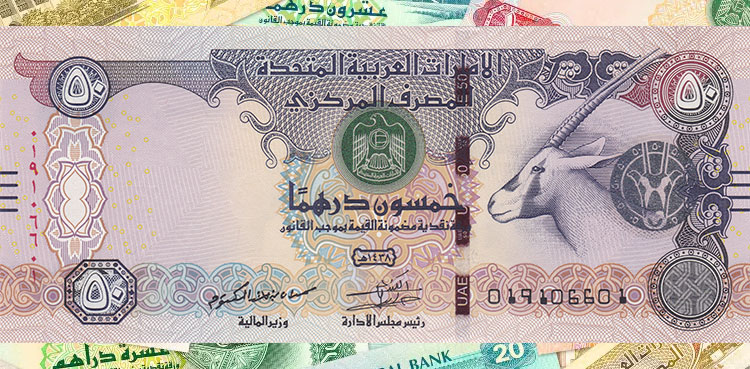
The UAE Dirham (AED) has slipped to 76.50 Pakistani Rupee (PKR) today, reflecting a modest drop of 0.02 PKR from yesterday’s rate of 76.52 PKR, as confirmed by trusted financial sources tracking market trends.This movement harkens back to a robust June, when the AED surged by 0.81 PKR, climbing from 76.44 PKR to 77.25 PKR and peaking at 77.6111 PKR on July 1, 2025. The Dirham’s slight retreat mirrors delicate market shifts, yet its resilience underscores the United Arab Emirates’ solid economic foundation and its role as a global financial leader.The AED-PKR exchange rate is shaped through a blend of stable and adaptable currency systems. The UAE Dirham is securely tethered to the US Dollar at 3.6725 AED per USD, a policy maintained by the Central Bank of the UAE since 1997 to ensure consistency and attract global investment. This tether links the Dirham’s value to USD variations, influenced by US Federal Reserve decisions, oil market trends, and the UAE’s trade surplus. The Pakistani Rupee, however, flows freely, its worth molded by market supply and demand, driven by Pakistan’s export-import dynamics, foreign reserves, inflation trends, and geopolitical stability. Today’s rate of 76.50 PKR per AED at 05:07 PM PKT on October 25, 2025, suggests a minor Dirham softening, reflecting market adjustments and providing a reliable benchmark for financial dealings. UAE’s Economic Framework: A Model of Innovation The UAE’s economic strength bolsters the Dirham’s stability, driven by pioneering policies that enhance its global stature. Moving beyond oil dependency, the nation has channeled resources into groundbreaking sectors like artificial intelligence, renewable energy, and tourism, with Dubai and Abu Dhabi flourishing as economic powerhouses. The UAE Vision 2031 promotes fiscal ingenuity, welcoming regulations, and infrastructure growth, drawing over $20 billion in foreign investment in 2025, per World Bank estimates. The Central Bank’s attentive management, supported by robust reserves and inflation controls, shields the Dirham from global volatility. This strategic vision sustains the currency’s value at 76.50 PKR, reinforcing the UAE’s reputation as a pillar of economic resilience. Support for Pakistani Expats and Their Households For the 1.5 million Pakistani expatriates thriving in the UAE, today’s AED rate of 76.50 PKR offers a slight remittance boost compared to yesterday’s 76.52 PKR. These workers, engaged in construction, retail, and professional roles, remitted $717.2 million home in June 2025, per State Bank of Pakistan data, positioning the UAE as Pakistan’s second-largest remittance source after Saudi Arabia. The modest Dirham dip yields a few extra rupees per dirham, enhancing family support in Pakistan for education, healthcare, and housing in regions like Punjab, Sindh, and Khyber Pakhtunkhwa, fueling local economic vitality and poverty relief. However, the rate still elevates costs for importing UAE goods—such as electronics and food—challenging consumers amid rising prices.This analysis draws on verified financial data and expert insights to deliver engaging perspectives on the AED-PKR exchange rate. The Dirham’s decline to 76.50 PKR at 05:07 PM PKT on October 25, 2025, highlights the UAE’s economic stability while providing a modest remittance advantage for Pakistani expatriates and their families. AED and PKR The UAE Dirham (AED), introduced in 1973, is the official currency of the United Arab Emirates, divided into 100 fils, and denoted as د.إ. Its US Dollar peg reflects the UAE’s oil legacy and diversified growth. The Pakistani Rupee (PKR), launched in 1948, is Pakistan’s official currency, split into 100 paisa, symbolized as ₨. It navigates the market, influenced by economic policies and global factors, serving a population exceeding 240 million.
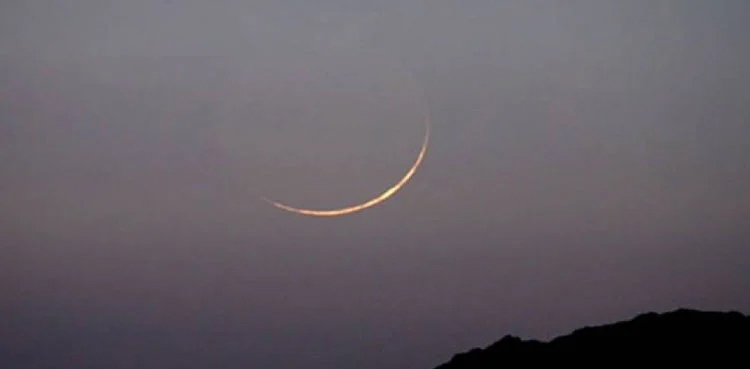
KARACHI: The Met Office has issued the moon sighting calendar, which predicts about the crescent of all Islamic months of the year.The calendar also included details of the birth of the moon, sunset and timing of the sighting.According to the calendar, the Sha'aban moon 1447 AH likely to be sighted on January 21, 2026, and Ramadan crescent's likely sighting is expected on Feb 18, 2026.Shawwal 1447 AH moon (Eidul Fitr Moon) sighting is expected on March 19, 2026, and Ziqaad moon on April 18.Zil Hajj crescent's likely sighting will be on May 17 and Muharram 1448 AH moon is expected on June 15, 2026.Safar moon likely to be sighted on July 15, while Rabiʽ al-Awwal moon sighting is expected on August 13.Rabi us Sani crescent sighting is likely on September 12 and Jamad al-Awal moon on October 12, 2026.Jamad us Sani moon on November 10 and Rajab moon is expected on December 10, 2026.The Pakistan Meteorological Department's Climate Data Processing Centre has issued this moon sighting calendar.
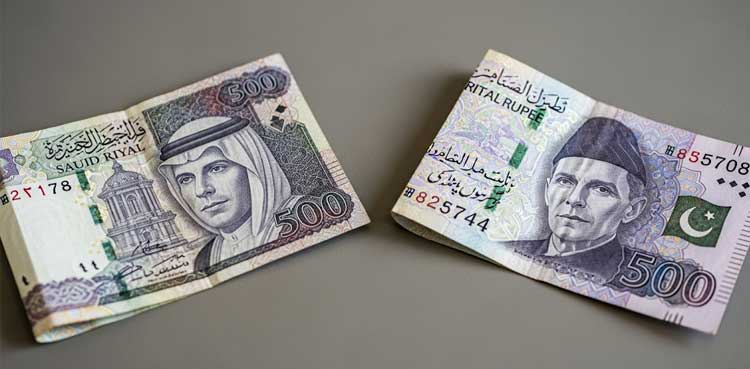
KARACHI, October 25, 2025: The Saudi Riyal (SAR) slipped to Rs74.93 against the Pakistani Rupee (PKR) in today’s open market, a slight decline from Rs74.95 on October 23 and well below the July 28 peak of Rs76.03, according to currency dealers.The selling rate adjusted to Rs75.50. This modest drop, driven by market recalibrations and steady remittance inflows, underscores the Saudi Riyal’s vital role in Pakistan’s economic framework.For millions of Pakistani families, the Saudi Riyal is a lifeline, channeling the earnings of workers in Saudi Arabia’s construction, healthcare, and hospitality sectors back home. The State Bank of Pakistan reports that Saudi Arabia accounted for $913.3 million of Pakistan’s remittance inflows in May 2025, the largest share. From July 2024 to May 2025, total remittances reached $34.9 billion, a 28.8% increase year-over-year. Today’s rate of Rs74.93 converts 1,000 Saudi Riyals to Rs74,930, down from Rs74,950 on October 23, slightly impacting budgets for essentials like education, medical care, and daily expenses. Economic Impact of the Riyal’s Decline The Saudi Riyal’s dip to Rs74.93 has immediate and broader effects. For households, this slight reduction trims remittance purchasing power as living costs rise. Businesses importing oil and petrochemicals from Saudi Arabia benefit from the Riyal’s dollar-pegged stability, and this decline eases import costs, supporting Pakistan’s trade balance. On a macroeconomic level, the Riyal’s performance continues to bolster Pakistan’s foreign exchange reserves, which surpassed $11 billion in October 2024, aiding inflation control and debt management. A weaker Rupee enhances export competitiveness, aligning with Pakistan’s economic resilience. Understanding the Saudi Riyal and Pakistani Rupee The Saudi Riyal (SAR), divided into 100 halala, is Saudi Arabia’s currency, managed by the Saudi Central Bank and pegged to the US dollar for reliability. This stability makes it a trusted medium for remittances and trade, especially for Pakistanis in the Kingdom. The Pakistani Rupee (PKR), symbolized by ₨, has been Pakistan’s currency since 1948, overseen by the State Bank of Pakistan under a managed floating exchange rate. Its value is shaped by inflation, trade flows, and remittance inflows, with the Riyal-PKR rate reflecting market dynamics. Outlook for the Riyal-PKR Exchange Rate The Saudi Riyal’s decline to Rs74.93 reflects ongoing market corrections, supported by remittances and trade with Saudi Arabia. Traders and policymakers should remain vigilant, as even small shifts can affect remittances, import costs, and economic strategies. For millions of Pakistanis, the Riyal’s dependable value remains a steady anchor, supporting families and sustaining Pakistan’s economic stability.Sources: State Bank of Pakistan, Forex Association of Pakistan

KARACHI: A murder case has been registered against several personnel of the Special Investigation Unit (SIU) for their alleged involvement in the death of 15-year-old Irfan Baloch, who reportedly died while in police custody.According to police officials, an FIR has been lodged at the SIU Police Station in Saddar on behalf of the SHO SIU, nominating ASI Ubaid Shah, ASI Sarfraz, constables Fayyaz Shah, Waqar, Asif Ali and others as accused in the case.Initial postmortem findings revealed multiple injury marks on the victim’s body, contradicting the police’s earlier claim that Irfan Baloch had died of a heart attack.The case has been registered under sections related to negligence and custodial death, as investigations continue into the circumstances surrounding the incident.Dr. Samia Tariq, the police surgeon overseeing the autopsy, confirmed that Irfan’s body bore signs of severe torture at several places. She added that samples from various organs had been preserved for chemical examination to determine the exact cause of death. “The final cause of death will be established after the chemical analysis report,” she said.As per police and hospital sources, Irfan was taken into custody on Wednesday morning from the Aysha Manzil area, reportedly while filming a TikTok video with friends. By 7 p.m. the same evening, his body was brought to Jinnah Hospital, more than 36 hours before the post-mortem was finally conducted.Initially, police officials tried to carry out the post-mortem at night, but medical officers refused, insisting that it must be done under a magistrate’s supervision. The examination was eventually completed on Friday morning under a medical board and a magistrate’s oversight.Doctors confirmed at least seven major injury marks on Irfan’s body, including head wounds, facial bruises, and trauma to the lower back and sensitive areas. Samples from various organs have been preserved for chemical testing to determine the exact cause of death.Three SIU sub-inspectors have been suspended, but none have been arrested.Police officials say Irfan and several other young men were detained for questioning in connection with an unspecified case, though no further details have been disclosed.Irfan, a resident of Bahawalpur who had come to Karachi for work, was reportedly picked up by SIU personnel near Ayesha Manzil along with several other youngsters while recording TikTok videos. The case for which he was detained remains undisclosed.
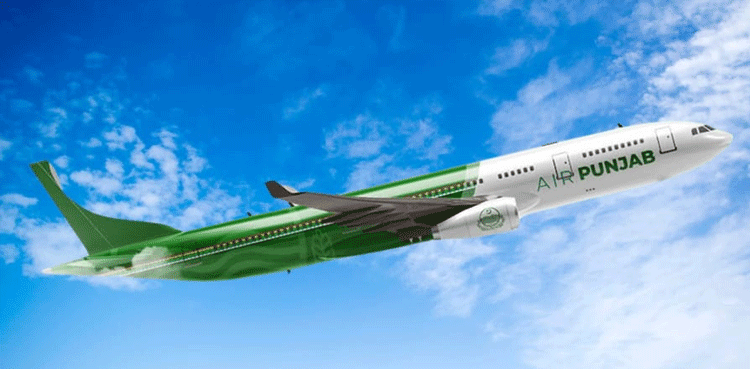
LAHORE: Punjab Chief Minister Maryam Nawaz Sharif on Saturday directed officials to make Air Punjab operational at the earliest.Chairing a meeting in Lahore, the chief minister instructed the authorities to complete all necessary formalities for the project’s first phase without delay.She also directed that modern and comfortable aircraft be acquired on lease to ensure quality and convenience for passengers.During the meeting, participants agreed on the initial flight route from Lahore to Islamabad, marking the first operational corridor for the new airline.The meeting also reviewed progress on the Murree Glass Train Project, with the chief minister directing officials to take practical steps for its timely execution.CM Maryam Nawaz Sharif had announced the launch of Air Punjab, a regional airline aimed at providing affordable and reliable air travel connecting major cities across the province.Earlier, the Punjab government introduced the country’s first airlift drone to assist in saving flood-affected people.According to officials, the modern drone has the capacity to airlift a person weighing up to 200 kilograms and move them to a safe location. The Home Secretary directed that the drone be dispatched to Multan for immediate deployment in ongoing flood rescue operations.Before its deployment, the Civil Defence Department successfully completed test flights of the airlift drone in Lahore. Authorities have also decided to procure 10 additional drones to strengthen disaster response capacity.
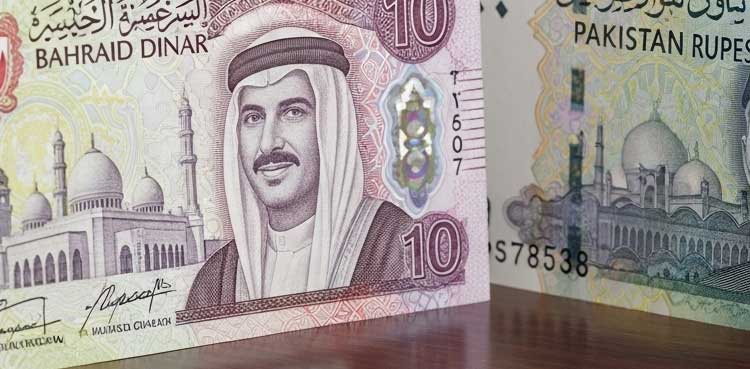
Karachi/Manama, October 25, 2025: The Bahraini Dinar (BHD) is trading at 745.45 Pakistani Rupee (PKR) today, showing a slight decline from 745.62 PKR on October 18, according to leading currency exchanges.This follows a volatile trend from 745.53 PKR on October 11, 746.17 PKR on October 04, 746.34 PKR on September 27, 746.48 PKR on September 20, 752.59 PKR on September 05, 747.49 PKR on August 30, 747.83 PKR on August 23, 748.07 PKR on August 16, 749.42 PKR on August 06, 751.33 PKR on August 04, 751.43 PKR on July 31, 756.67 PKR on July 28, 759.88 PKR on July 22, 755.64 PKR on July 19, and 754.38 PKR on July 14, with earlier rates of 753.22 PKR last week, 751.86 PKR on June 30, 751.94 PKR on June 26, and 751.23 PKR on June 23, reflecting a 0.88% rise from 744.79 PKR on June 8. Intermediate values of 748.55 PKR on June 11 and 749.72 PKR on June 13 highlight the dinar’s recent fluctuations, influenced by Bahrain’s economic conditions and Pakistan’s currency dynamics.The BHD to PKR exchange rate is shaped by contrasting monetary policies. The BHD, pegged at 1 USD = 0.376 BHD since 2001 by the Central Bank of Bahrain, remains stable, tied to global USD movements and Bahrain’s oil-based economy. Fluctuations in oil prices and fiscal policies affect its value. Meanwhile, the PKR, managed under a controlled float by the State Bank of Pakistan, varies due to inflation, trade deficits, and reserve levels, contributing to its volatility. Economic Impact The BHD’s decline to 745.45 PKR carries notable economic implications. For Bahrain, a weaker dinar may enhance export competitiveness while increasing the cost of Pakistani imports like textiles. For Pakistan, lower costs of Bahraini imports, particularly petroleum, could ease inflation pressures. However, remittances from Pakistani expatriates in Bahrain may lose value, impacting local incomes, while exporters might face increased competition in Bahrain’s market. Currency Overview The Bahraini Dinar (BHD), introduced in 1965, is Bahrain’s official currency, divided into 1,000 fils and managed by the Central Bank of Bahrain. Pegged to the U.S. Dollar, it ranks among the world’s most valuable currencies, symbolized by “BD” or “ب.د”. The Pakistani Rupee (PKR), launched in 1948, is Pakistan’s official currency, overseen by the State Bank of Pakistan and split into 100 paisa (now obsolete). Denoted by “₨” or “Rs,” the PKR is widely used but prone to economic fluctuations.
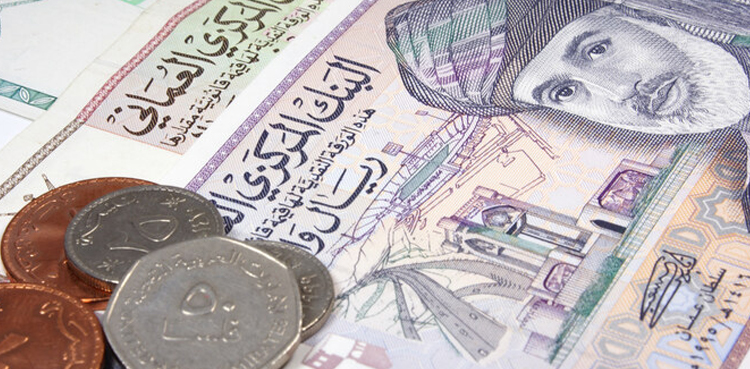
As of today, October 25, 2025, one Omani Riyal (OMR) is trading at 730.82 Pakistani Rupees (PKR), a slight dip from last week's 731.08 PKR. The Omani Riyal (﷼) is a steady currency, pegged to the US Dollar at 2.6008 since 1986, fueled by Oman’s oil-rich economy. It’s a symbol of stability in the Gulf. The Pakistani Rupee (₨), managed by the State Bank of Pakistan, is more volatile as a floating currency, influenced by inflation, remittances, and global events.This week, the OMR/PKR pair stayed tight, moving from around 731.08 PKR last Saturday to today’s 730.82 PKR—a drop of about 0.04%. The Riyal’s value is anchored by Oman’s oil exports, with crude prices at $75-80 per barrel holding firm. For the PKR, Pakistan’s $2.5 billion in monthly remittances, many from Omani workers, provide support, alongside a 20% policy rate to counter 12% inflation (versus Oman’s 2%). The US dollar’s strength, tied to the OMR’s peg, also shapes the rate. Sitting near its 50-day average of ~732 PKR, the pair shows no major swings on the horizon.This matters for everyday folks. A Pakistani worker in Muscat earning 500 OMR sends home about 365,410 PKR, enough to cover rising costs like rice, up 15% in Pakistan. This week’s slight dip means a tiny pinch for remittance recipients, but it’s still a solid value. In trade, Oman and Pakistan’s $1.2 billion annual exchange—textiles from Pakistan, oil from Oman—feels these shifts. A softer OMR could make Omani imports a tad pricier for Pakistanis, while Pakistani exporters might gain a slight edge. For travelers, 1,000 PKR now buys roughly 1.37 OMR for a Muscat trip, barely changed from last week.For the latest OMR to PKR updates, keep an eye on oil prices and Pakistan’s economic moves. Live tools like Xe or Investing.com are perfect for real-time rates. Whether you’re sending money home or planning a trade, these small changes can add up.
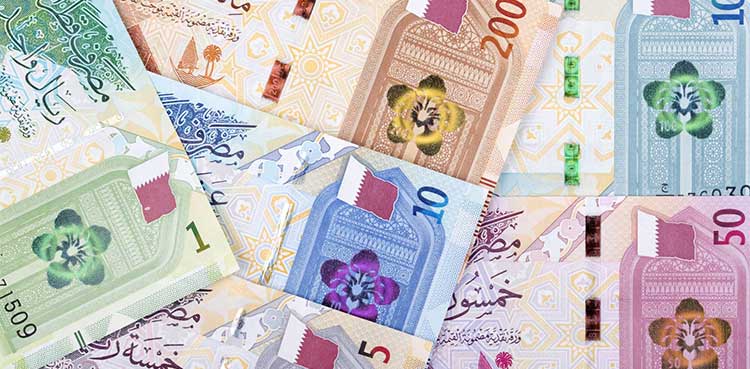
Karachi/Doha, October 25, 2025: The Qatari Riyal (QAR) trades at 77.17 Pakistani Rupee (PKR), a slight increase from 77.10 PKR on October 18, but still down from 77.20 PKR on October 11 and 77.26 PKR on October 4. This modest uptick follows a period of decline, with Qatar’s robust, energy-driven economy providing a stable foundation despite fluctuations in the forex market. The QAR’s recent movements reflect a complex interplay of economic factors affecting both Qatar and Pakistan, with implications for expatriates and investors closely monitoring the exchange rate. The QAR has experienced notable volatility over recent months, with a general downward trend since mid-July. It traded at 77.29 PKR on September 27, 77.16 PKR on September 20, 77.93 PKR on September 5, and 77.39 PKR on August 30. Earlier rates included 77.44 PKR on August 23, 77.47 PKR on August 16, 77.88 PKR on August 12, 77.42 PKR on August 9, 77.80 PKR on August 4, and 77.72 PKR on August 1. In July, rates were 77.74 PKR on July 29, 78.01 PKR on July 26, a high of 78.26 PKR on July 19, 78.16 PKR on July 23, 78.03 PKR on July 16, 78.02 PKR on July 9, and 77.94 PKR on July 2. June 2025 closed at 77.86 PKR, with rates at 77.90 PKR on July 7 and July 4, 77.70 PKR on June 27, 77.87 PKR on June 25, 77.82 PKR on June 23, 77.72 PKR on June 14, and 77.39 PKR at the month’s start. This trajectory shows the QAR peaking in mid-July before trending lower, with today’s rate slightly above the recent low of 77.10 PKR.How Currency Valuation Operates The QAR-PKR exchange rate is determined by supply and demand dynamics in the foreign exchange market, influenced by a range of factors including trade balances, remittance flows, and monetary policies. The Qatari Riyal, fixed at 3.64 QAR per USD, benefits from Qatar’s economic strength, primarily driven by its position as a leading exporter of liquefied natural gas (LNG). This peg to the US dollar provides a degree of stability, insulating the QAR from some global market volatility. In contrast, the Pakistani Rupee operates as a free-floating currency, making it more susceptible to domestic challenges such as inflation, political instability, and fluctuations in foreign reserves. Analysts note that Pakistan’s economic conditions, including recent efforts to stabilize the PKR through policy measures, have contributed to the QAR’s relative weakening in recent weeks.Impact on Pakistani Expatriates The over 125,000 Pakistani expatriates in Qatar, many of whom work in construction, hospitality, and professional services, are directly affected by these exchange rate shifts. The QAR’s slight uptick today offers a small boost to remittance values. A 1,000 QAR transfer, worth 77,100 PKR on October 18, now yields 77,170 PKR—an increase of 70 PKR, though still 220 PKR below June’s starting rate of 77,390 PKR. This modest gain provides some relief for families in Pakistan relying on these funds for essentials like education, healthcare, and household expenses. However, the overall downward trend since July’s peak of 78.26 PKR means remittances are worth less than earlier this year, potentially straining budgets for some households. Conversely, expatriates earning in PKR or holding PKR savings may find imported goods in Qatar, such as food, electronics, or clothing, slightly more affordable due to the stronger PKR.Broader Economic Context Qatar’s economy remains a powerhouse in the Gulf, driven by its vast natural gas reserves and strategic investments in infrastructure and diversification. The fixed peg to the US dollar ensures the QAR’s stability, but its value against other currencies like the PKR depends on the relative strength of the US dollar and Pakistan’s economic conditions. Pakistan, meanwhile, faces ongoing challenges with inflation and foreign reserve pressures, though recent fiscal reforms and international support have helped stabilize the PKR to some extent. The interplay of these factors has driven the QAR-PKR rate’s recent volatility, with the PKR gaining ground against the QAR since mid-July.Currency Snapshot The Qatari Riyal (QAR), introduced in 1966, is Qatar’s official currency, denoted by QR or ر.ق. Managed by the Qatar Central Bank and pegged to the US dollar, it is a cornerstone of the Gulf’s vibrant economy, widely used in trade and investment. The Pakistani Rupee (PKR), symbolized by ₨, has been Pakistan’s currency since 1948. Overseen by the State Bank of Pakistan, its value is influenced by domestic economic policies and geopolitical developments, contributing to its volatility in the forex market.
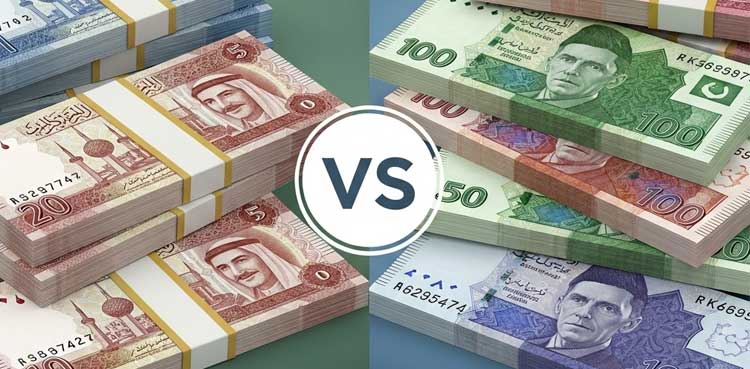
Kuwait City/Karachi, October 25, 2025: The Kuwaiti Dinar (KWD) has weakened further against the Pakistani Rupee (PKR), reaching 916.35 PKR at the end of this week in open market trading.This marks a continued decline from 919.53 PKR on October 18, 917.13 PKR on October 11, 919.70 PKR on October 4, and earlier rates of 920.75 PKR on September 27, 922.13 PKR on September 20, and a summer peak of 926.79 PKR. The KWD’s trajectory also includes a climb from 919.67 PKR on June 10, 922.06 PKR on June 13, and 925.45 PKR on June 18. Despite today’s dip, the Dinar remains robust, underpinned by Kuwait’s oil-driven economy, while Pakistan’s fiscal reforms and reserve gains bolster the Rupee. This shift impacts trade, remittances, and the Pakistani expatriate community in Kuwait. Valuation Dynamics: Oil Markets vs. PKR Stabilization The Kuwaiti Dinar’s strength stems from Kuwait’s economic fundamentals. As the world’s highest-valued currency, the KWD is loosely pegged to a basket of currencies, primarily the US Dollar, under the Central Bank of Kuwait’s management. Supported by foreign exchange reserves estimated at $43 billion in October 2025, the KWD maintains low volatility. Global oil prices, averaging $79 per barrel this month due to balanced OPEC+ production and easing geopolitical tensions, continue to support the Dinar. However, a slight softening in oil prices, with Brent crude at $78.50 per barrel on October 24, may contribute to today’s decline. The US Dollar’s steady performance, with the Dollar Index at approximately 100.4, provides partial support for the KWD through its linkage.In contrast, the Pakistani Rupee operates under a managed float, shaped by market forces such as foreign exchange reserves, inflation, and trade balances. The State Bank of Pakistan intervenes to limit sharp fluctuations, and recent efforts have strengthened the PKR. Inflation, reported at 8.1% in October 2025, continues to moderate, while foreign reserves, at approximately $15.8 billion, benefit from IMF inflows and remittance surges. Pakistan’s trade deficit, projected at $26.7 billion for fiscal year 2024-25, and reliance on energy imports remain challenges, but improved reserves and fiscal reforms have bolstered the PKR. The KWD’s position at 916.35 PKR today, down from 919.53 PKR on October 18 and significantly below the summer high of 926.79 PKR, reflects a 1.95% appreciation against the PKR since November 26, 2024 (901.33 PKR), driven by Pakistan’s stabilizing measures. Economic and Social Impacts: Remittances, Trade, and Opportunities The KWD/PKR exchange rate significantly affects the 220,000-250,000 Pakistani expatriates in Kuwait, whose remittances, estimated at $1.9 billion annually, are a vital economic pillar for Pakistan. Today’s weaker Dinar slightly reduces the PKR value of these transfers. For example, 1,000 KWD, worth 919,530 PKR on October 18, now converts to 916,350 PKR, a loss of 3,180 PKR. Despite this, the Dinar’s overall strength compared to last year (901,330 PKR for 1,000 KWD on November 26, 2024) still provides a net gain of 15,020 PKR, supporting households in regions like Punjab and Sindh for essentials like education, healthcare, and housing.The weaker Dinar offers relief for Pakistani businesses importing Kuwaiti goods, particularly petroleum products, a key component of bilateral trade. Lower import costs could ease domestic fuel prices in Pakistan, mitigating inflationary pressures. For expatriates, the dip means slightly less PKR for their earnings, but it reduces the cost of PKR-priced goods or services during visits or for investments like real estate. However, Pakistan’s inflation may still erode the real value of remittances over time.In trade, a stronger PKR could reduce the competitiveness of Pakistani exports, such as textiles and agricultural products, in Kuwaiti markets. However, the lower KWD rate eases import costs, potentially narrowing Pakistan’s trade deficit. Structural constraints like supply chain inefficiencies and global competition continue to limit export gains. Today’s rate of 916.35 PKR provides a window of stability for importers, though ongoing volatility underscores the need for predictable trade conditions. Broader Context: Global and Regional Influences Kuwait’s economy, with a GDP of approximately $150 billion in 2025, thrives on oil exports and maintains a fiscal surplus, with public debt below 10% of GDP. This stability reinforces the Dinar’s strength, though softening oil prices introduce mild pressure. In contrast, Pakistan’s $360 billion economy faces energy shortages, political uncertainty, and reliance on external financing. The International Monetary Fund’s $7 billion Extended Fund Facility, ongoing in 2025, supports reforms like fiscal consolidation, boosting reserves but pressuring domestic consumption through measures like subsidy cuts.Regional stability in the Middle East sustains oil prices, benefiting the KWD, while Pakistan’s economic ties to the Gulf through remittances and investments make it sensitive to currency fluctuations. Global factors, including US monetary policy and commodity price trends, influence the KWD/PKR pair. Today’s decline in the KWD may reflect softened oil prices or Pakistan’s improved reserve position, possibly tied to multilateral support or remittance inflows. Currency Profiles The Kuwaiti Dinar (KWD), introduced in 1961, is Kuwait’s official currency, symbolized as KD or د.ك and subdivided into 1,000 fils. Managed by the Central Bank of Kuwait, it is the world’s highest-valued currency, backed by oil revenues, substantial reserves, and a peg to a currency basket, ensuring stability and global confidence.The Pakistani Rupee (PKR), established in 1947, is Pakistan’s currency, symbolized as ₨ and divided into 100 paisa. Regulated by the State Bank of Pakistan under a managed float, its value reflects domestic challenges like inflation, trade imbalances, and limited reserves, though recent reforms have strengthened its position against the KWD.The Kuwaiti Dinar’s decline to 916.35 Pakistani Rupee on October 25, 2025, reflects evolving market dynamics, with Kuwait’s oil-driven stability tempered by softening crude prices and Pakistan’s PKR bolstered by reserve gains and fiscal reforms. While the weaker Dinar slightly reduces remittance values, it offers relief for importers and highlights Pakistan’s stabilization efforts. As oil prices, monetary policies, and regional dynamics evolve, the KWD/PKR exchange rate will remain a critical indicator of bilateral economic ties, with significant implications for trade, remittances, and millions of livelihoods.
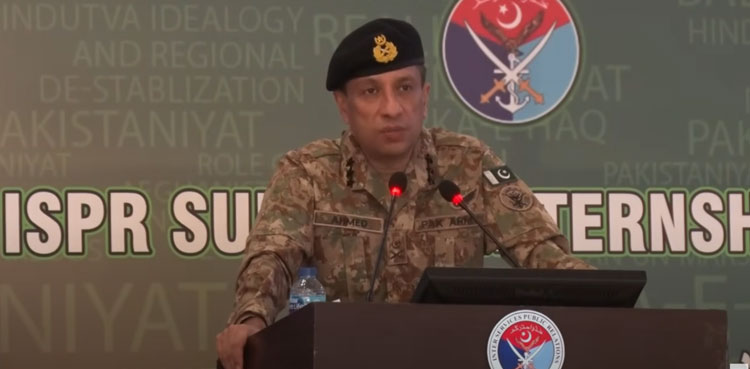
MARDAN: Director General Inter-Services Public Relations (DG ISPR) Lieutenant General Ahmed Sharif Chaudhry on Saturday reaffirmed that the Pakistan Army and the people of Pakistan stand united and resolute against any aggression by the enemy.He expressed these views while interacting with teachers and students from various universities and religious seminaries in Mardan, Khyber Pakhtunkhwa.Participants from Abdul Wali Khan University, Women University Mardan, University of Engineering and Technology, and several religious seminaries attended the interactive session.During the discussion, the DG ISPR spoke on a range of important national issues, including “Marka-e-Haq,” recent Pak-Afghan border tensions, and the overall security situation in the region.He said Pakistan has taken effective measures against terrorism and Khawarij and remains committed to ensuring lasting peace and stability.“The Pakistan Army and the nation will stand as a wall of steel against any form of enemy aggression,” he asserted.The participants — students and teachers alike — paid rich tribute to the martyrs and veterans (ghazis) of the armed forces, acknowledging their sacrifices for peace and national development.They reaffirmed their support for the armed forces, stating that it is the duty of every citizen to stand by those who defend the country.
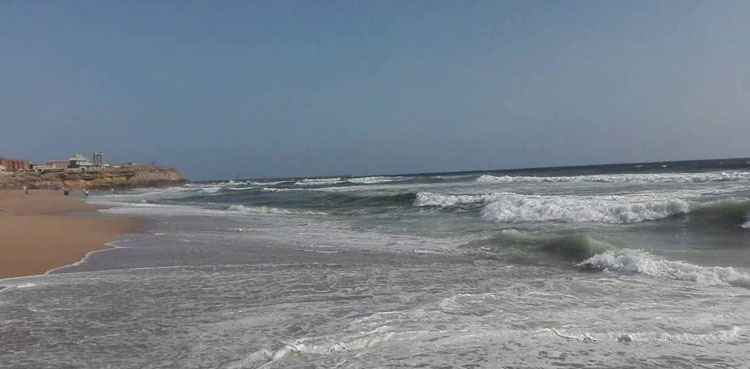
KARACHI: The Depression over eastern Arabian Sea moved north-northwestwards during past 24hours and now lay centered around Latitude 16.40 N & Longitude 70.40 E at about 1004Km south-southeast of Karachi. The Met Office in its fourth alert on Saturday said that the Depression has been located at 400Km southwest of Mumbai (India) over eastern-central Arabian Sea.It is likely to move nearly northwestwards across east-central Arabian Sea during next 24hours, PMD’s cyclone warning center, Karachi said.Currently, there is no threat to any coastal area of Pakistan, Karachi cyclone warning center, monitoring the system said.Earlier on Thursday, the low-pressure area over the region intensified into a depression, with its centre located near latitude 8.6°N and longitude 67.6°E — about 1,800 kilometres southeast of Karachi.In October, the low-pressure over the Arabian Sea was intensified into Depression and located at 440 kilometers distance in south from Karachi causing high waves and rough weather in the sea along Sindh’s coastal belt.The weather system later turned into the severe cyclonic storm ‘Shakhti’ over west-central and northwest of Arabian Sea.
© Copyright 2025, All Rights Reserved

